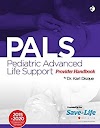specialty choose at university
This comprehensive guide uses measured student outcomes, job market statistics and other higher education data to explore the various benefits and drawbacks of the nation’s most popular undergraduate major subjects. Our goal is to provide a helpful resource for students who are unsure about which major is the best choice for them financially, professionally and personally.
CHANGING MAJORS
According to a recent report from the University of La Verne, roughly half of all college freshmen enter college undecided about their major. Additionally, as many as 70% will change their major at least once during the course of their four-year degree program; the majority of these students change their major at least three times.Many students worry that changing their major will delay graduation and, as a result, significantly increase their overall tuition costs. However, a study at Western Kentucky University found that shifting major fields had a “minimal impact” on planned graduation times. Furthermore, the data showed that full-time students who changed majors at least once reported higher graduation rates than those who remained in the same field for their entire bachelor’s program.
MOST POPULAR MAJORS
Students typically tend to their major based on career-related factors on job availability employment rates in their proposed field. The following table lists the most popular majors among today’s college graduates; the data was originally published in a report from Georgetown University titled, ‘The Economic Value of College Majors.’Use regions/landmarks to skip ahead to chart.
=
Long description.
No description available.
Structure.
Chart type: column chart.
column series with 15 columns.
The chart has 1 X axis displaying categories.
The chart has 1 Y axis displaying values.
Chart graphic.
26.1%26.1%
8.3%8.3%
5.6%5.6%
9.4%9.4%
7.5%7.5%
5.2%5.2%
6.9%6.9%
2.6%2.6%
4.8%4.8%
2.7%2.7%
8.6%8.6%
5.2%5.2%
2.5%2.5%
1.5%1.5%
3.3%3.3%
% of Students in Major
Business
Architecture and Engineering
Computer
Education
Health
Psychology and Social Work
Social Sciences
Law & Public Policy
Arts
Industrial Arts
Humanities and Liberal Arts
Communications & Journalism
Physical Sciences
Agriculture & Natural Resources
Biology & Life Sciences
0
2.5
5
7.5
10
12.5
15
17.5
20
22.5
25
27.5
WHICH MAJORS HAVE THE HIGHEST EMPLOYMENT RATE?
Employment rates will differ between professionals who enter the workforce with a bachelor’s degree and those who go on to earn a master’s or other advanced credential. Studies have also found that employment rates varied between new graduates and bachelor’s degree-holders with multiple years of professional experience. The following table from Georgetown’s ‘Hard Times’ report shows unemployment rates for new bachelor’s graduates, experienced bachelor’s graduates and master’s degree-holders:Use regions/landmarks to skip ahead to chart and navigate between data series.
CHART
Long description.
No description available.
Structure.
Chart type: column chart.
The chart has 1 X axis displaying categories.
The chart has 1 Y axis displaying Unemployment Rate.
Chart graphic.
Unemployment Rate
Bachelor's Graduates (no experience)
Bachelor's Graduates (some experience)
Master's Graduates
Business
Architecture
Engineering
Computer & Statistics & Mathematics
Education
Health
Psychology & Social Work
Social Sciences
Law & Public Policy
Arts
Recreation
Humanities & Liberal Arts
Communications & Journalism
Agriculture & Natural Resources
Life & Physical Sciences
0%
10%
20%
30%
40%
HAPPIEST MAJORS
College alumni can be a helpful source of information for students who are exploring different areas of study or considering a change in their major focus. These individuals offer valuable insights about their major for both current students and job-seekers.
A recent poll by Payscale found that degree-holding alumni generally recommended majors in science, technology, engineering and mathematics (STEM) fields; other areas with high approval ratings included business, accounting and finance, nursing and health care management. Alternatively, majors related to the arts, humanities and social sciences held low approval ratings among college alumni.
Additionally, the following table shows Payscale’s alumni recommendation ratings (%) for 25 of the most popular college majors:













